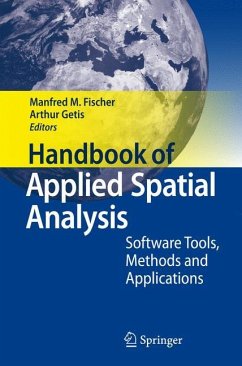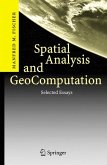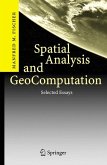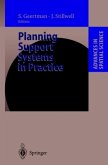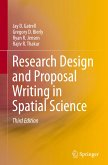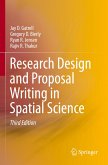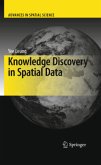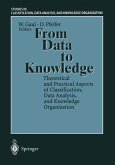This book details current models, methods, and techniques for the analysis of spatial data. It includes a number of example sections that demonstrate the application of spatial analysis in the economic, environmental and health sciences.
The Handbook is written for academics, researchers, practitioners and advanced graduate students. It has been designed to be read by those new or starting out in the field of spatial analysis as well as by those who are already familiar with the field. The chapters have been written in such a way that readers who are new to the field will gain important overview and insight. At the same time, those readers who are already practitioners in the field will gain through the advanced and/or updated tools and new materials and state-of-the-art developments included. This volume provides an accounting of the diversity of current and emergent approaches, not available elsewhere despite the many excellent journals and te- books that exist. Most of the chapters are original, some few are reprints from the Journal of Geographical Systems, Geographical Analysis, The Review of Regional Studies and Letters of Spatial and Resource Sciences. We let our contributors - velop, from their particularperspective and insights, their own strategies for m- ping the part of terrain for which they were responsible. As the chapters were submitted, we became the first consumers of the project we had initiated. We gained from depth, breadth and distinctiveness of our contributors' insights and, in particular, the presence of links between them.
The Handbook is written for academics, researchers, practitioners and advanced graduate students. It has been designed to be read by those new or starting out in the field of spatial analysis as well as by those who are already familiar with the field. The chapters have been written in such a way that readers who are new to the field will gain important overview and insight. At the same time, those readers who are already practitioners in the field will gain through the advanced and/or updated tools and new materials and state-of-the-art developments included. This volume provides an accounting of the diversity of current and emergent approaches, not available elsewhere despite the many excellent journals and te- books that exist. Most of the chapters are original, some few are reprints from the Journal of Geographical Systems, Geographical Analysis, The Review of Regional Studies and Letters of Spatial and Resource Sciences. We let our contributors - velop, from their particularperspective and insights, their own strategies for m- ping the part of terrain for which they were responsible. As the chapters were submitted, we became the first consumers of the project we had initiated. We gained from depth, breadth and distinctiveness of our contributors' insights and, in particular, the presence of links between them.
From the reviews:
"The Handbook of Applied Spatial Analysis provides an important summary of, and gateway into, the rapidly developing field of spatial analysis. It aims to provide both a useful guide for researchers at all levels in spatial analytic fields and a basis for more in-depth research. ... certainly fulfils the expectations set out in its blurb. It provides a thorough ... insight into contemporary spatial analysis that many with an interest in this field will find useful." (James Cheshire, Environment and Planning B: Planning and Design, Vol. 37, 2010)
"It provides a comprehensive introduction to a variety of problems and methods that may be beneficial to students and researchers who intend to learn and apply spatial analysis techniques in their studies and/or research. More importantly, the book provides valuable breadth and depth in its treatment of many topics. ... suitable for readers without substantial prior knowledge of spatial analysis. A book with such a combination of topics and qualities is a pleasant and valuable addition to the rich literature in this area." (Changshan Wu, Journal of Regional Science, Vol. 52 (2), 2012)
"The editors have done an excellent job to bring together conceptual knowledge and application pursuits while empowering readers with the information they need to find these resources and try some of the included techniques using the examples to guide them. The book will be attractive to higher level students and professionals ... . There are not many books as up-to-date with such a wide coverage of spatial analysis tools and techniques along with supporting resource information." (Jeff Thurston, Sensors & Systems, July, 2010)
"The Handbook of Applied Spatial Analysis provides an important summary of, and gateway into, the rapidly developing field of spatial analysis. It aims to provide both a useful guide for researchers at all levels in spatial analytic fields and a basis for more in-depth research. ... certainly fulfils the expectations set out in its blurb. It provides a thorough ... insight into contemporary spatial analysis that many with an interest in this field will find useful." (James Cheshire, Environment and Planning B: Planning and Design, Vol. 37, 2010)
"It provides a comprehensive introduction to a variety of problems and methods that may be beneficial to students and researchers who intend to learn and apply spatial analysis techniques in their studies and/or research. More importantly, the book provides valuable breadth and depth in its treatment of many topics. ... suitable for readers without substantial prior knowledge of spatial analysis. A book with such a combination of topics and qualities is a pleasant and valuable addition to the rich literature in this area." (Changshan Wu, Journal of Regional Science, Vol. 52 (2), 2012)
"The editors have done an excellent job to bring together conceptual knowledge and application pursuits while empowering readers with the information they need to find these resources and try some of the included techniques using the examples to guide them. The book will be attractive to higher level students and professionals ... . There are not many books as up-to-date with such a wide coverage of spatial analysis tools and techniques along with supporting resource information." (Jeff Thurston, Sensors & Systems, July, 2010)

